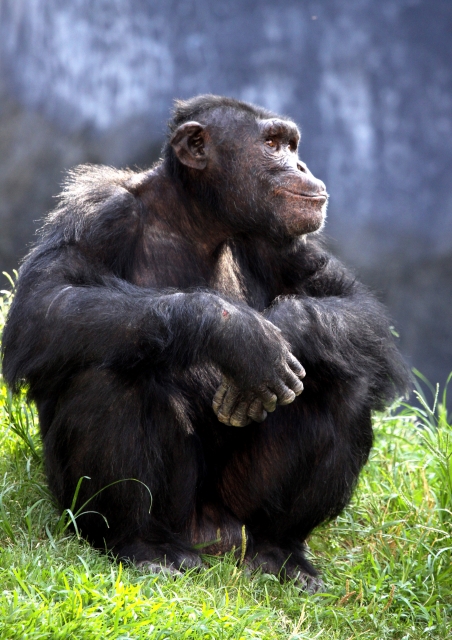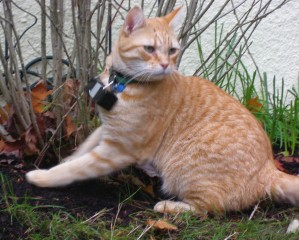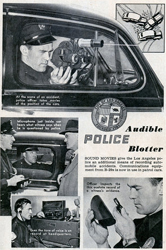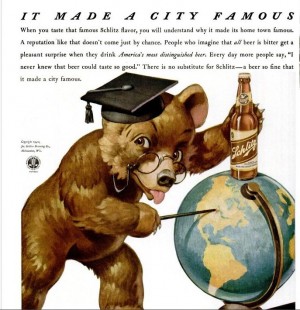Animals
Latitude Zero
Posted By: Paul - Tue Jun 29, 2010 -
Comments (2)
Category: Animals, Cryptozoology, Geography and Maps, Movies, Oceans and Maritime Pursuits, Paranormal, Surgery, Science Fiction, 1960s, Asia, Weapons
Weird Animals - Och Aye The Roo!

Of course, this won’t be news to one member of Britain’s thriving rod-fishing community, who this week caught a piranha in his local pond (Guardian).
Another place you might not expect to see exotic creatures is on your lunch menu, but that didn’t stop one restaurant owner in Mesa, AZ from putting “lion burgers” on the menu to celebrate soccer’s World Cup. Cameron Selogie of the Il Vinaio makes his “mane course” with genuine lion meat imported from South Africa, earning him the ire of local animal rights groups and several death threats, but not a reprimand from health officials. According to an FDA spokesman serving lion meat is perfectly legal, as long as it’s not roar (Scotsman).
Slightly luckier than the lions, one cat who has fallen on his feet is Oscar, a housecat from the Isle of Jersey in the UK, widely billed as the “bionic cat” after successfully receiving two artificial hind legs to replace the ones he lost in an altercation with a combine harvester (BBC News).
You might think pitting a rodent like mammal against a 12 tonne Triceratops makes for an equally one-sided match up, but evidence emerged recently that our primitive ancestors occasionally feasted upon dinosaurs. Seventy-five million year old “gnaw marks” of a kind characteristic of early mammals, and belonging to a creature not much bigger than a squirrel, have been found on the fossil bones both of Tricerotops and the crocodile-like predator Champsosaurus (LiveScience).
Sadly today the nearest we get to dinosaur flesh is turkey or chicken, but not all birds were prized solely for their meat. The huia bird of New Zealand for example, was once used to make the feathered head-dresses of Maori chiefs, until predation from accidentally introduced species drove it to extinction around 1907. But if the bird has gone its feathers have not, and one recently became the most expensive feather ever when it sold at auction for NZ$8000, i.e. $4000 American (Telegraph).
More in extended >>
Posted By: Dumbfounded - Mon Jun 28, 2010 -
Comments (4)
Category: Aliens, Animals, Dinosaurs and Other Extinct Creatures, Cryptozoology, Food, Overpriced Merchandise, Pets, Cats, Rants, Warnings, Jeremiads, Prophecies and Cassandra-like Figures, Science, Violence, 1980s
Follies of the Mad Men #110
[From Life magazine for June 8 1942.]1) I have never seen another Schlitz ad with a bear.
2) Bears were not a Schlitz mascot.
3) The text of the ad makes no mention of the bear.
WHAT IS THIS BEAR DOING HERE?
Was there a famous trained bear circa 1942 that Schlitz wanted to associate themselves with? Do bears in the wild have a particular fondness for Schlitz? What university does this bear teach at?
So many questions from one little ad.....
Posted By: Paul - Mon Jun 21, 2010 -
Comments (8)
Category: Animals, Business, Advertising, Products, Education, 1940s, Alcohol
Cat Documentary
Here's another avenue to fame -- hook a camera to your cat and set it to take pictures every two minutes..

It gets better.The cat just had an exhibit in Seattle and was filmed by Animal Planet. He's also had an exhibit at the Chicago Nature Museum.
Special note: he has recently upgraded to video -- shooting for 2 minutes of every four.
Here's the web link:
http://www.photographercat.com/
Posted By: gdanea - Sun Jun 20, 2010 -
Comments (1)
Category: Animals
Corn Dogs

Stock up now on batter mix and a special deep fryer, from this vendor.

Posted By: Paul - Sat Jun 19, 2010 -
Comments (3)
Category: Addictions, Animals, Food, Kitsch and Collectibles, Regionalism
Jugged Rooster
[From Life magazine for December 14 1942.]I'm not sure what the impetus was for this brainstorm, but the letter writer has confessed to sticking a tiny chick into a jar through a small hole, then letting the chick grow to adult size totally within the confinement.
Proper punishment suggestions welcome!
Posted By: Paul - Wed Jun 16, 2010 -
Comments (6)
Category: Animals, Horror, Prisons, Outsider Art, 1940s
Crab Fights
How bored do you have to be to stage a crab fight?
Posted By: Paul - Thu Jun 10, 2010 -
Comments (7)
Category: Animals, Contests, Races and Other Competitions, Gambling, Casinos, Lotteries and Other Games of Chance
Beware The Parrot
I was reading articles yesterday about drunken parrots falling out of the sky in Australia, when I stumbled across this video. It made me laugh til I cried. Let's hope the parrot was drunk.
Posted By: Nethie - Fri Jun 04, 2010 -
Comments (3)
Category: Animals, Humor, Inebriation and Intoxicants, Nature, Documentaries, More Things To Worry About
Bad Luck!
Bad Luck ! from Eric Hao on Vimeo.
Posted By: Paul - Tue May 18, 2010 -
Comments (2)
Category: Aliens, Animals, Cartoons
One Stop Weird News Shopping

(The image is from the July, 1946 issue of Popular Science.)
Posted By: Nethie - Thu May 13, 2010 -
Comments (4)
Category: Animals, Crime, Stupidity, Urban Life, More Things To Worry About, Recurring, Goofs and Screw-ups

| Who We Are |
|---|
| Alex Boese Alex is the creator and curator of the Museum of Hoaxes. He's also the author of various weird, non-fiction, science-themed books such as Elephants on Acid and Psychedelic Apes. Paul Di Filippo Paul has been paid to put weird ideas into fictional form for over thirty years, in his career as a noted science fiction writer. He has recently begun blogging on many curious topics with three fellow writers at The Inferior 4+1. Contact Us |






